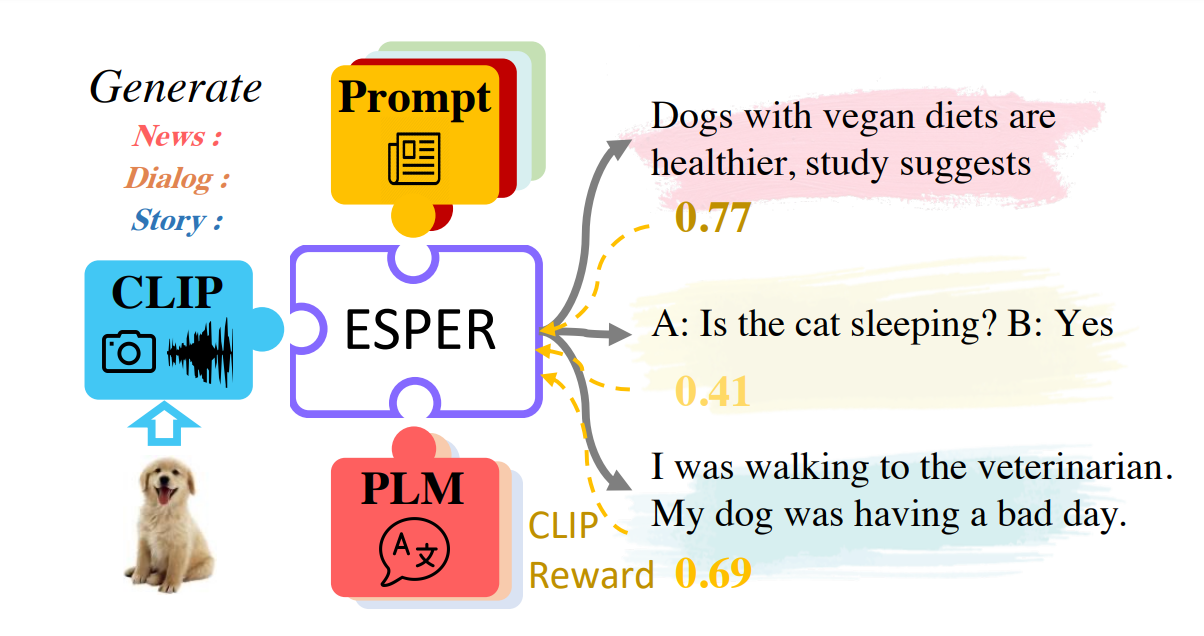This repository contains the code for our CVPR 2023 paper:
Fusing Pre-trained Language Models with Multimodal Prompts through Reinforcement Learning
Youngjae Yu*, Jiwan Chung*, Heeseung Yun, Jack Hessel, Jae Sung Park, Ximing Lu, Rowan Zellers, Prithviraj Ammanabrolu, Ronan Le Bras, Gunhee Kim, Yejin Choi (*: equal contribution)
ESP is a new dataset with focus on providing multiple styled text targets for the same image.
We release ESP dataset in /data/dataset_v_0_2.json.
The images of ESP dataset is a subset of the COCO 2014 dataset validation split.
An example from the dataset is as following:
{
"caption_sns": "Ready for the local team beach tennis match. Here we are waiting on opponents!",
"caption_news": "Tourists flock to area for the local beach tennis tournament.",
"caption_instruction": "One of the best ways to get better at tennis. Is to practice on dirt. So, look on google for local dirt tennis courts online. Then, wait for a sunny day, and gather some friends.",
"image_id": 17927,
"id": 988
}
The example shows three text with different styles (social media, news, and instruction) conditioned on the same image.
- Are you releasing the ESPER-pre-trained weights in the future?
- Yes. We are currently tidying up the code and finding a reliable source for file sharing.
- Are you releasing the finetuned weights for each downstream task?
- No. You can easily finetune ESPER weights using standard teacher forcing.
- Will the data-specific training codes be available?
- Yes. Please wait while we clean up the codes for better usability.
- Will the finetuning codes be available?
- No. However, since ESPER is simply CLIPCap architecture-wise, you can easily finetune it on any vision-to-language generation data yourself.

